In India, we are all familiar with types of shawls. Many have heard of only a few types that are extremely famous, like Pashmina Shawl.
A shawl is not just something that enhances fashion or keeps you warm but it also holds traditional, heritage and sentimental value.
Indians, not only use a shawl to protect themselves from the cold weather, to enhance their fashion or put a style statement on any outfit.
They use it to show their utmost respect for someone.
Variety and Tradition: Exploring the Types of Shawls
For example to facilitate a dignitary, a guest, or to commemorate someone who retires from their service.
No matter how they use it, in all aspects, a shawl is a fabric that holds Indian tradition within it and a pride for India.
You can find different types of shawls in the market, differentiated based on the fabric.
type of weaving, embroidery or general workmanship used to create them or even the kind of design and colour used.
A shawl can also consist of wool, including different types of wool like:
pashmina, cashmere, merino, lama, alpaca or with a blend of wool and silk, or can be differentiated by the designs or pattern used to make it.
So, let’s talk about the different types of shawls:
Pure Pashmina Shawl

This is the best and most famous type of shawl in the world. One can call it Pure Pashmina Shawl or Original Pashmina Shawl, both refer to the same item.
You can call a shawl a Pure Pashmina Shawl only if artisans make it purely and completely from the hairs of the Changthangi Pashmina goat in Ladakh and Kashmir.
People know the Pure Pashmina Shawl for its softness, light weight, and supreme warmth.
Artisans take months to even years to complete one Pashmina Shawl made from rare Pashmina wool, depending on the art or design used.
These shawls can be plain solid colours, to having embroidery on the borders, or to complete extensive all over jamawar embroidery.
Artisans make Pashmina Shawls for all styles and looks.
You can easily find Pashmina Shawl for both men and Women.
The only thing you should take care of is to make sure the piece you buy is a Pure Pashmina Shawl.
Kalamkari Shawl

The word “Kalamkari” is made of two words, “Kalam” that means pen and “Kari” or “Kaari” which means craftsmanship.
The Kalamkari is a traditional art form of storytelling used to depict Indian culture and heritage like Ramayana, Mahabharat, etc.
Using a variety of designs or motifs, from floral patterns to paisley.
Artisans make Kalamkari Shawls using a technique of embroidery.
Which since the beginning of shawl making has always been done on pure pashmina woven shawls. Vivid, bright, multicolour embroideries completed with a fine needle in a neat and detailed manner is the conventional appearance of a Kalamkari Shawl.
However with the extremely high prices of pure pashmina many shawls producers have adapted to producing the embroidery on fine woollen shawls as well.
Since the 2020s the Kalamkari Shawls gained more popularity with new designs of an Indian Raj Durbar, Mughal Durbar, Baraat Borders and designs started appearing on the shawls.
Kani Weave Shawl

To understand simply, artisans weave this shawl entirely on a traditional handloom using pure pashmina threads, creating an extensively designed and colorful piece.
There is generally no embroidery work in a kani shawl,
it is about the neat and clear motifs and the rich colour combinations which when woven together form the magnificent piece.
The Kani weaving technique, uses needles called “Tujis” made up of wood or cane to create beautiful designs on Pashmina Shawls.
The art is indigenous to Kanihama, a village in Kashmir, which can be traced back to 3000 B.C.
According to Ain-i-Akbari, the Kani Weave Shawls are said to be one of the favourites of the Mughal emperor Akbar.
What makes such a handloom technique so special is that unlike other handloom or powerloom techniques,
Like the weaving “code” or programme” of the operation of the shuttle/ harness is written completely on paper, in Urdu, called “Talim”.
It is not imprint or a stamp of the design.
Artisans with experience need to read the Talim quickly and operate the handloom.
Artisans are able to weave about 1 to 2 inches per day.
The Kani Shawl ranges from 80, 100 to 110 inches in length.
The pre weaving process of arranging and dyeing the yarn, writing the Talim, setting the warp and the loom, post weaving cutting and finishing are an additional 45-60 days.
Ari Embroidery

Ari Hand embroidery is not only makes the piece come alive but also enhances its durability and style.
A merino wool shawl is just the most suitable fabric on which this form of embroidery becomes magical.
All the Ari shawls use merino wool imported from Australia, the region with boasts growth of the most fine counts of merino wool.
Ari Embroidery Shawl effortlessly enhances any minimalist outfit.
In the Ari embroidery technique, artisans use a pen-like needle with a hook on its end to create fine and detailed work that showcases motifs, paisleys, or complex patterns.
This is also a craft in which both women and men artisans have equally participated.
But, Men have predominantly completed other embroideries like Sozni and Kalamkari.
The art work is not only visible on shawls but you will find the meticulous work on other pieces of fabrics like:
Kashmiri pherans/phirans, Kashimri jackets, throws, cushions dupattas, suits, etc.
Sozni Embroidery Shawl
Sozni is another form of needle embroidery that turns a simple piece of fabric or shawl into timeless elegance.
It originated back in the 15th century when Persians brought the art in the Kashmir Valley with them.
The term “Sozni” itself means needle in Persian.
Earlier, artisans only did Sozni embroidery work on the clothes worn by the Royal courtmen and Kashmiri nobles.
This technique is famous for its detailed and intricate designs and delicate stitches.
Artisans predominantly did Sozni embroidery on Pure Pashmina Shawls.
But since the 2000s have also been done on fine wool bases.
Sozni embroidery can be of many types –
simple bale (embroidery on 2 opposite edges), four side embroidery, butehadaar (motifs all over), jaaldar (all over the pieces but lightly done having pockets of empty areas to show the base color), and jamawar (extensive detailed embroidery in which even the base color cannot be seen).
This form of embroidery is one of the slowest, next only to aksi embroidery. A complete jamawar embroidery shawl takes upto 2 years to complete.
Double Side Aksi Embroidery Shawl

A rare form of embroidery, requiring special skill and experience which not even sozni master karigars may know.
Artisans use a sozni needle to complete embroidery on both sides of the piece in contrasting colors.
Both sides can consider themselves the front and neither the back.
Aksi embroidery shawls are the slowest to produce, requiring special skill, precision and knowledge.
A complete Aksi jamawar piece takes upto three years to complete.
Artisans always make these shawls from Pure Pashmina and they typically rank among the most expensive ones made.
Ikat Weave Shawl

Ikat is actually a dyeing technique.
In this technique, artisans mindfully tie or cover the wool threads before dyeing, and then,
Artisans use the resultant threads to weave a shawl, creating a beautiful Ikat Weave Shawl.
The term “Ikat” means tying or binding. Ikat Weave Shawls differ from ordinary dyed shawls.
This technique results in hazy and soft lines and patterns where regular dyeing technique creates sharp lines.
Zari Shimmers

Zari is the metallic thread made of gold or silver. So, artisans create Zari Shawls using metallic threads.
Artisans can make this type of shawl in two ways. Makers can use either Zari in embroidery on the shawl or incorporate Zari along with the base thread to make the shawl itself.
The metallic threads create the shimmery effect on the shawl.
Conclusion
So, by now, we hope that you have acquired some overview of the different types of shawls available in the market.
This is a general list and not an exhaustive ones as they are certain other types of shawls as well:
moonlight shawls, lace shawls, crystal shawls, solid and classic woven shawls, shawls using two techniques,
Like Sozni embroidery highlighted on a Ikat shawl. etc.
There are also more types of shawls available in the market,
You can differentiate shawls either by the wool thread used or the technique used to make and design them.
At KCS Kashmir Shawl Emporium, you will find a variety of these shawls or stoles for men, women and a wide range of unisex pieces in our store,
and on our website with a facility of shipping worldwide in no time.



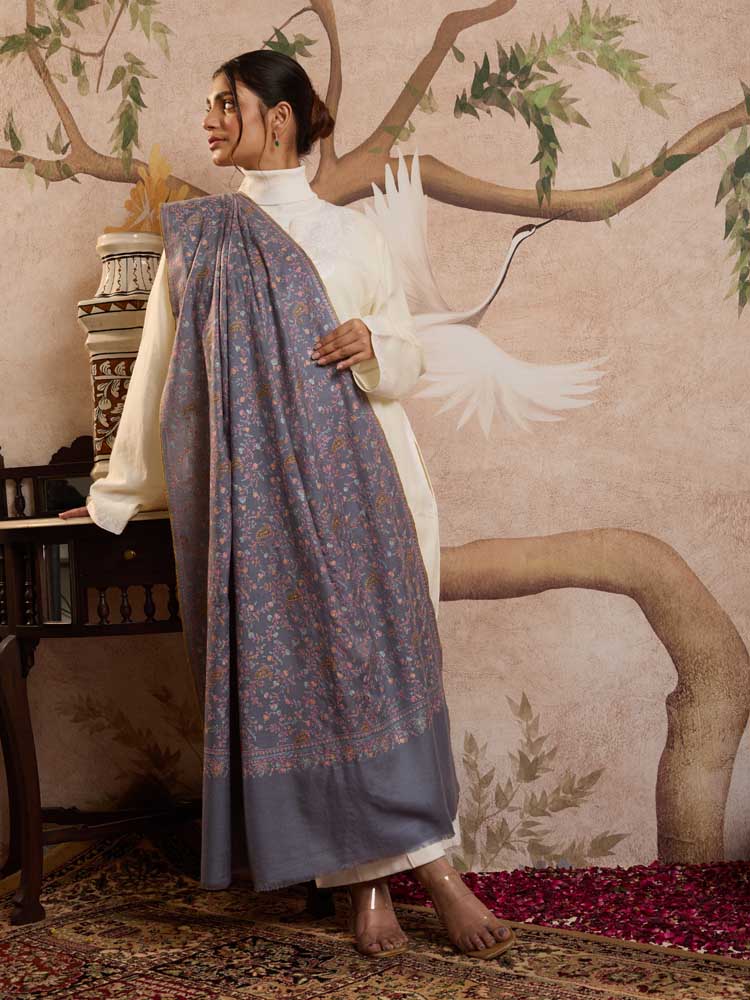
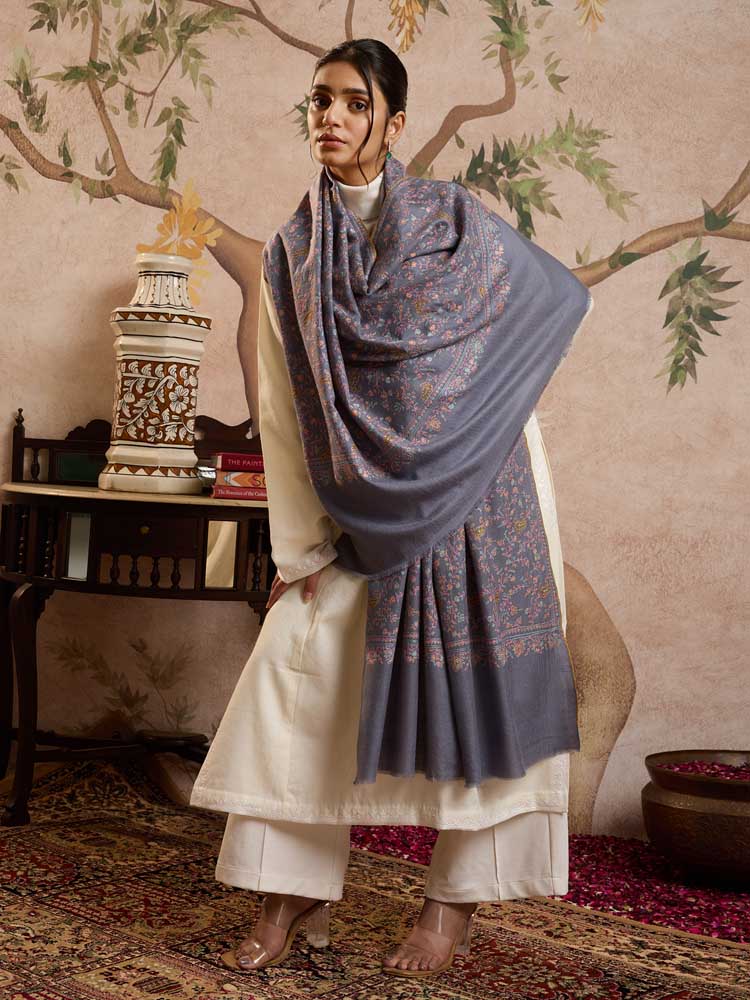
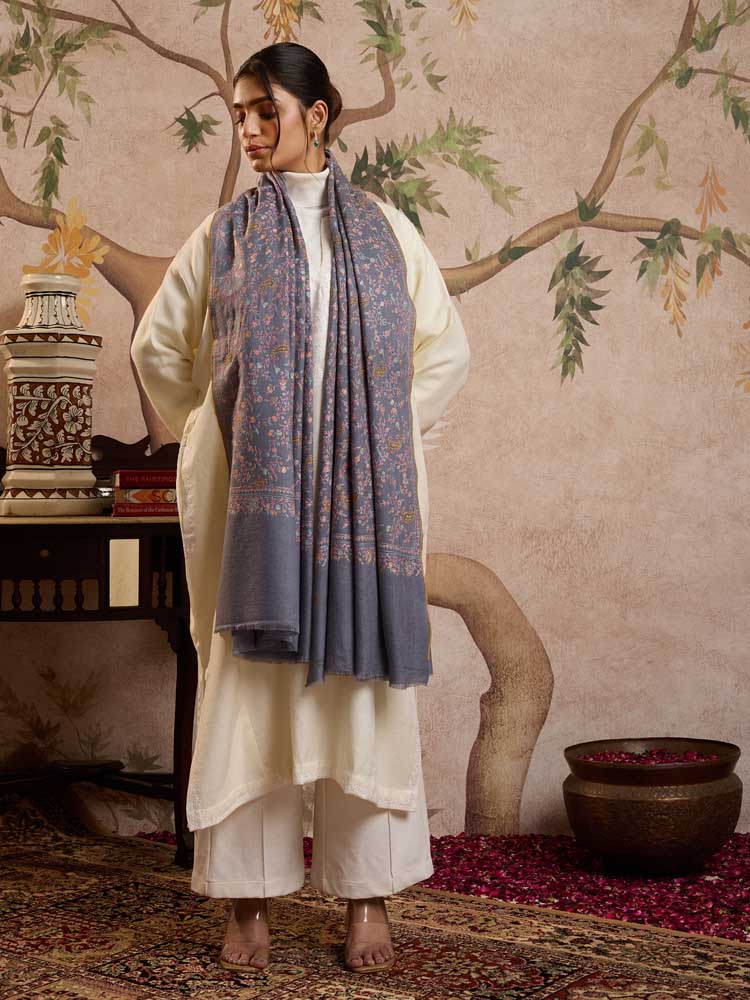
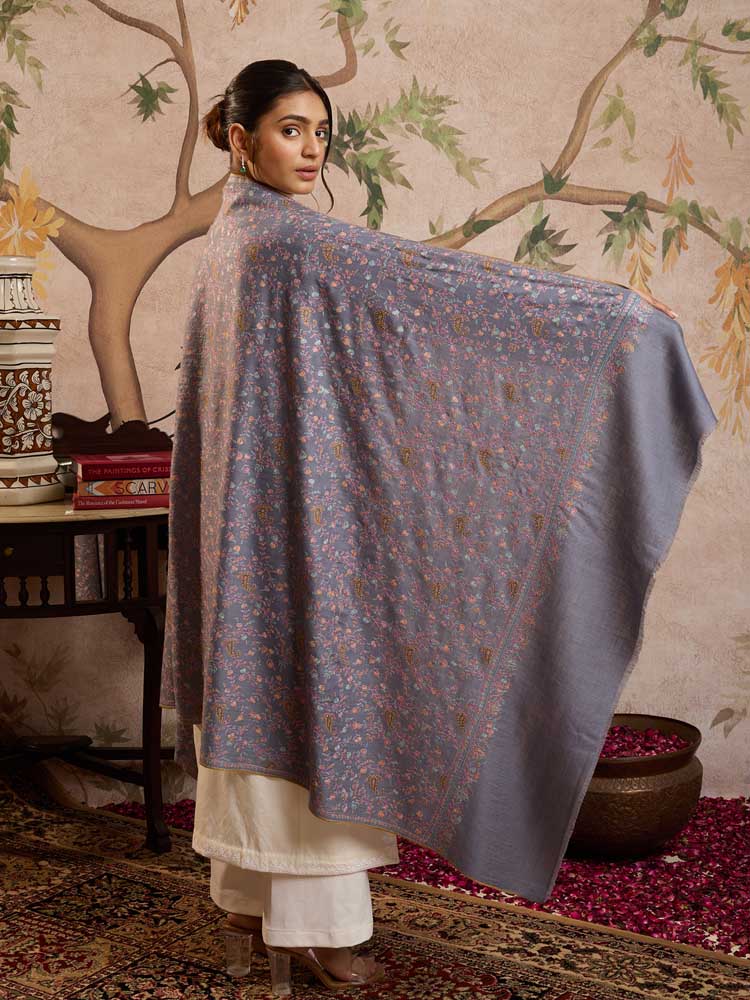

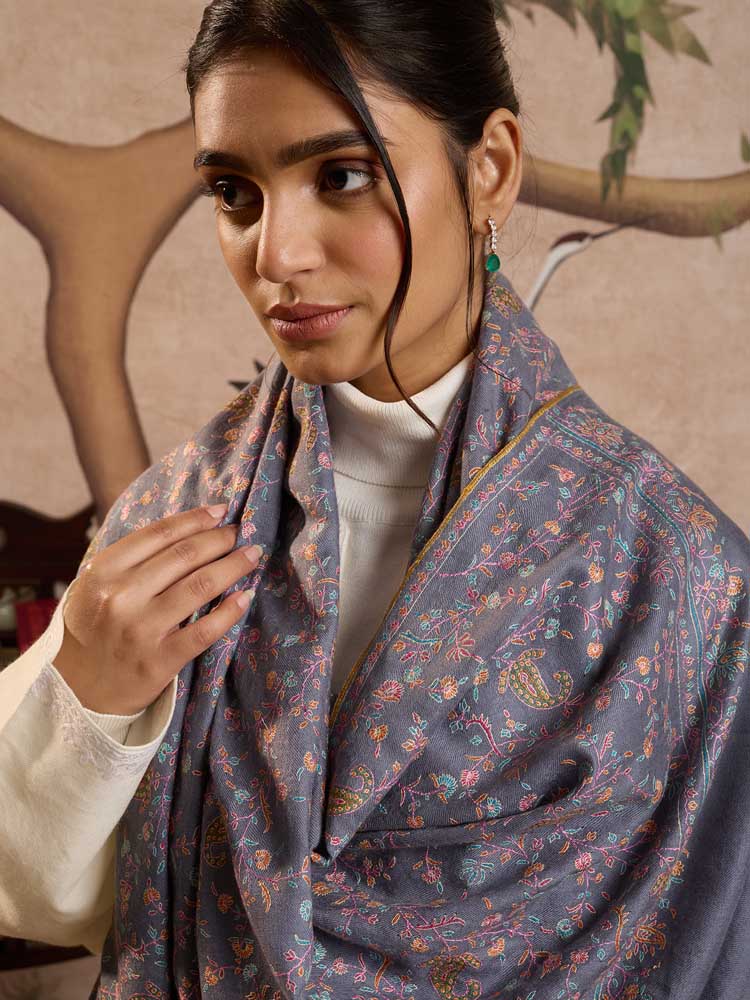
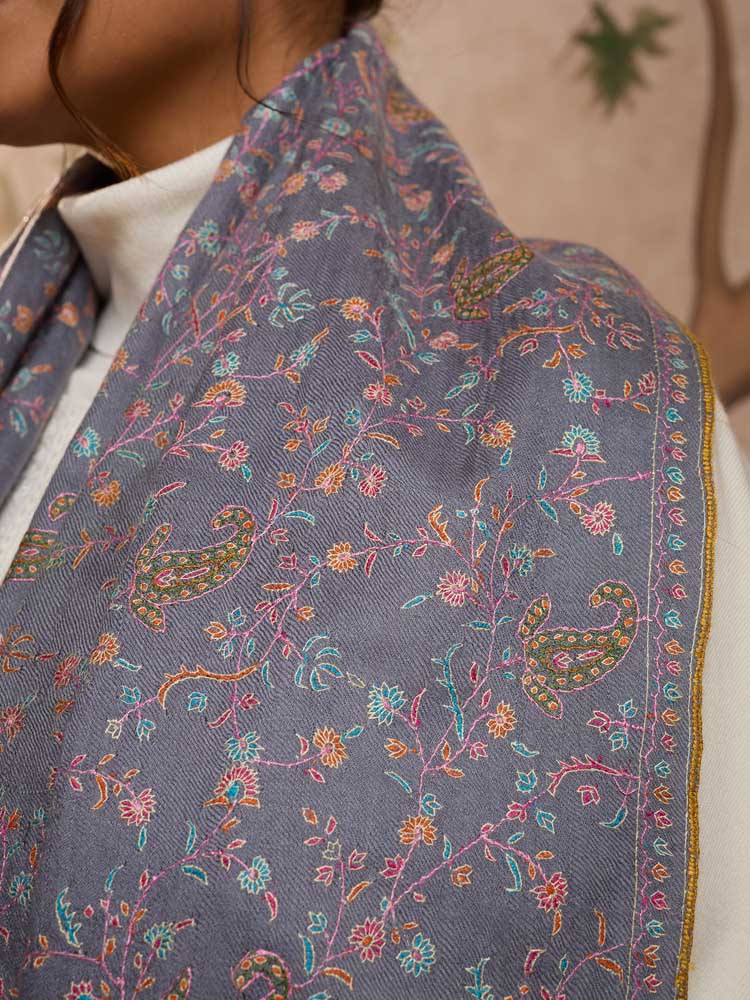









![ImageBadaam Jaal Ari Wool Long Jacket – Crimson, Black [50]](https://d13676iop780hb.cloudfront.net/uploads/2025/12/KCS-1752-RS-317-1.jpg)
![ImageBadaam Jaal Ari Wool Long Jacket – Crimson, Black [50]](https://d13676iop780hb.cloudfront.net/uploads/2025/12/KCS-1752-RS-317-2.jpg)
![ImageBadaam Jaal Ari Wool Long Jacket – Crimson, Black [50]](https://d13676iop780hb.cloudfront.net/uploads/2025/12/KCS-1752-RS-317-3.jpg)
![ImageBadaam Jaal Ari Wool Long Jacket – Crimson, Black [50]](https://d13676iop780hb.cloudfront.net/uploads/2025/12/KCS-1752-RS-317-4.jpg)
![ImageBadaam Jaal Ari Wool Long Jacket – Crimson, Black [50]](https://d13676iop780hb.cloudfront.net/uploads/2025/12/KCS-1752-RS-317-5.jpg)
![ImageBadaam Jaal Ari Wool Long Jacket – Crimson, Black [50]](https://d13676iop780hb.cloudfront.net/uploads/2025/12/KCS-1752-RS-317-6.jpg)